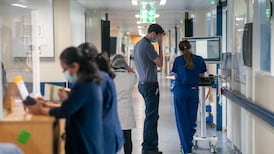'There are many treatment options and choices available for breast cancer," says consultant oncologist Dr Michaela Higgins. She is addressing this week's conferences ahead of returning to practise in Ireland after seven years in the US. She has worked at Massachusetts General Hospital and is assistant professor of medicine at Harvard Medical School.
One discovery with significant potential is the benefit of taking drugs such as tamoxifen or letrozole, which are prescribed for women with early breast cancer after surgery, for 10 years, which is twice as long as has traditionally been recommended.
Higgins says, “By continuing to use these hormone-blocking drugs for 10 years instead of five, there are improved outcomes.
“This also means there are more potential years in which to experience side effects from the drugs; therefore, the longer duration of treatment may not be suitable or necessary for every woman. However, it is something to be discussed with their doctor as they approach the end of the first five years.”
Another promising approach is the use of injections called LHRH agonists which Higgins says can minimise harm to the ovaries and, therefore, help young women who are receiving chemotherapy but who have not reached menopause to preserve their fertility.
Sensitive sample test
One of the most significant advances, which could become routine in the next few years, is the use of very sensitive tests on a blood sample to detect cancer and guide personalised, targeted drug treatment for that person’s cancer.
These techniques have been developed to either detect cancer cells in the bloodstream or small fragments of tumour DNA that have been shed into the blood- stream. These blood tests are being developed to replace standard biopsies. This use of so-called “liquid biopsies” is an exciting area, says Higgins.
“Currently the reliance is on open biopsies to diagnose a cancer, and they are often painful. Liquid biopsies are being developed that can detect cancer cells and potentially track how the cells respond to a specific treatment. At the moment we often treat patients for a couple of months before looking at CT or X-ray to tell us whether or not the treatment is working.
“With liquid biopsies we may be able to tailor treatment to the specific patient and identify early on whether or not the treatment is working.”
Scientists developed these sensitive tests by detecting the “unique kinks in the DNA of tumour cells which harbour far more abnormalities and mutations than normal, healthy cells elsewhere in the body. Detecting these kinks may help the selection of targeted therapy for an individual.”
By using new treatments that target the specific DNA of the cancer cell, you can potentially spare the patient “traditional chemotherapy which is not ‘smart’. It kills all cells that are growing quickly, not just the cancer cells. “That is why chemotherapy causes hair loss and diarrhoea. Ideally the treatment would be toxic only to the cancer.”
Examples of this approach are the use of Herceptin and Tykerb for HER2+ breast cancers, “and this approach is also being rolled out to subsets of lung and colon cancers. Often the targeted therapies are added to traditional chemotherapy to improve efficacy.
“We want to find more nuanced therapies for these subsets because we know that the same approach will not work equally well for every patient. The potential is there to target cancer more specifically while also reducing the treatment side effects.
“The nature of an oncologist is to be an optimist. The advances we see now are small individually, but are leading to incremental progress that slowly but surely is improving treatments and prognosis for our patients.”
Dr Michaela Higgins is speaking on the first day of the conference. She will take up a post as consultant medical oncologist in the Mater Misericordiae hospital in Dublin early in 2015.









